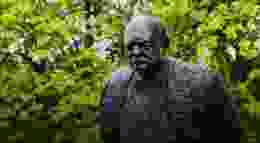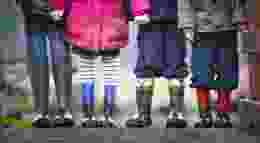
My childhood in Assam left a legacy of fear
Growing up in Assam, India, Aruni Kashyap lived under violence that has left a legacy of fear. How do you write about this feeling of fear? Aruni Kashyap investigates.
As an immigrant living in the United States, far away from immediate family, the roots of this fear of losing someone I love is in my experience of growing up under violence in Assam, India. However, this fear became manifold on the day when early in 2021 Americans who refused to believe facts stormed the US Capitol to overthrow a legitimately elected government. When friends of colour started to call each other, advising each other to stay home and not even go for grocery, it reminded me of my childhood days of uncertainty and danger when an insurgency ravaged my state, when the sound of boots of security forces mixed with the sounds of gunfire and folk songs.
Growing up in Assam—especially rural and semi-urban Assam—during the eighties and nineties meant living through a normalised sense of fear that accompanied daily life. My state in the North-eastern part of India is home to several insurgencies against Indian rule, fuelled by ethnic nationalism due to the neglect and apathy of the Indian government since independence in 1947. This apathy is informed by ignorance seen among Indian elites and common people who have given birth to laws to govern us. Laws that are drafted specifically for the "conflict zone" called "Northeast India," a cluster of eight states, home to numerous tribal groups.
One of them is a law called AFSPA, introduced first in the undivided state of Assam in the 1950s. Condemned by multiple human rights organizations as undemocratic, it has given birth to unequal citizens since the 50s in Northeast India, who may be killed or arrested without warrant at the will of Indian security forces during so-called counter-insurgency operations. This is the same law that now enables state terror in many other places. This experience has shaped my childhood and is the foundation of much of my artistic inquiries done through fiction.
My aunts and uncles in rural areas lived even more acutely under this fear, and I felt that to my bones because we used to visit them and live with them often. However, my life in the city was relatively safe: thousands of security forces guarded the lanes of Guwahati to ensure businesses ran smoothly. But occasionally, bloodstains reached our doorsteps too, along with the newspaper that is rolled by the hawker and thrown to the veranda of the house from a distance because they are in a hurry to deliver in other houses.
After moving to Delhi to study college and beginning life in a small city in the US as a professor of English, I have started feeling less of that fear, but during the US Capitol attack, I spent a day thinking about my days in Assam. Strangely, I didn't think about the bodies that were discovered in ditches; rotting jaws and legs and knees, recovered from rivers and ponds. I found myself repeatedly thinking about my mother's face, who used to fix her gaze at me for a few seconds every time I left home. Once, I had asked her why and she had told me. For years, I had forgotten that answer, but on the day I started getting calls from friends asking me to lock myself up and don't even go grocery shopping or filling my car with gas, I thought about my mother's gaze and recalled her answer and felt her fear.
In many ways, my story collection His Father's Disease explores this normalised sense of violence. Each written and unwritten story is a possible reason why my mother used to stare at my face for so many seconds every time I went out. Gradually, it became a rule in the house. She would walk restlessly on the veranda if she didn't get to stare at me or my face before I left the house to go to school or even for coaching classes in the evening. But it didn't stop her from functioning. As a professor of literature, she did her job well. Ensured food on the table. She debated politics in the evenings with her friends who worked for the women writers' organisation or the local women's committee that organised cultural events. Finding a language for this perennial state of horror was the biggest and most exciting challenge for me.
How do you write about this feeling of fear? It is not only terror, not only violence, not only uncertainty but it is also about love and joy because we didn't stop consuming life. As Chimamanda Adichie says in her now-legendary speech "Danger of a Single Story," every person I knew were "voracious consumers of human life." To depict this experience was the biggest and most fulfilling artistic challenge for me.
Disease, dis-ease, or the disease as a metaphor. Connecting this thread in the stories was one way I tried to represent this everyday horror and happiness in my characters' lives: the disease of mental health, homophobia, sexism, patriarchy, and a sense of dis-ease with immigrants in the stories set in the United States. These diseases are perhaps representative of many social cancers that are evident in a society that affect the lives of my characters. But it also suggests a sense of anarchy that ensues as a result of these corrosive forces. Perhaps, this is what Susan Sontag calls, "a master illness—a total contagion of society" in her phenomenal book Illness as Metaphor.
My mother wasn't the only one who was looking at their loved ones before leaving home: I saw that same longing on the face of my best friend's mother. I meet him when I was eighteen, remaining friends for life. Eventually, his mother would stare at both our faces before letting us leave the house for the day. I never asked her why because I already knew the answer—she used to stare at me because she wanted to make sure she had a hard look at my face if I never came back.
His Father's Disease by Aruni Kashyap is out now from flipped eye publishing.











